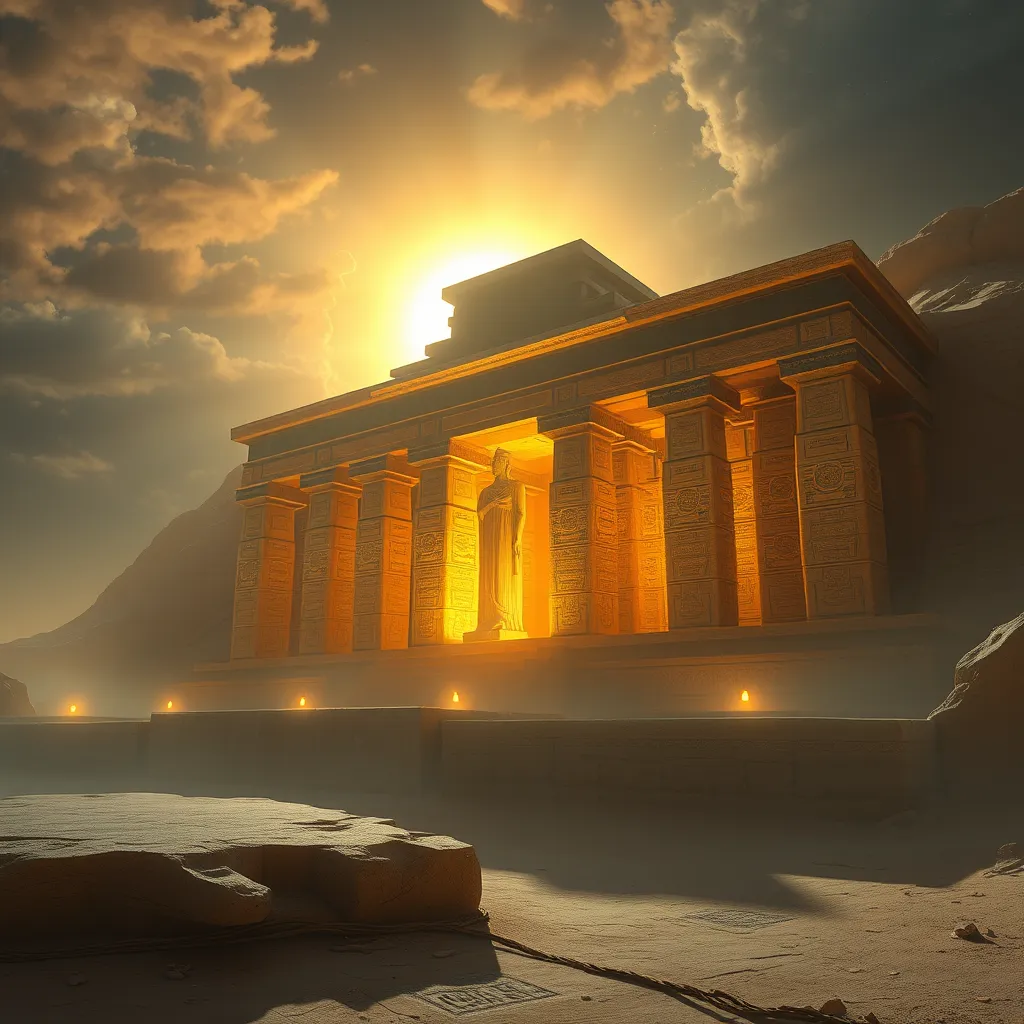The Duat: A Realm of Eternal Light and Shadows
I. Introduction
The Duat, in ancient Egyptian mythology, is a complex and multifaceted realm that embodies the afterlife journey of souls. It is often depicted as a place where the living and the dead intersect, characterized by both light and darkness. The Duat holds significant importance in the beliefs surrounding the afterlife, serving as a transitional space for souls seeking judgment and peace.
This article aims to explore the Duat’s historical context, geography, the journey through its landscapes, the deities that inhabit it, and its representation in art and literature. By delving into these aspects, we can better understand the rich tapestry of beliefs that shaped ancient Egyptian culture and spirituality.
II. Historical Context of the Duat
The concept of the Duat has its roots in the earliest Egyptian texts, where it is often referred to as the “underworld” or the “netherworld.” It evolved over time, reflecting the changing beliefs and practices of different dynasties.
- Origins: The Duat first appeared in Pyramid Texts, dating back to the Old Kingdom. Here, it was described as a dark, mysterious space filled with challenges.
- Evolution: By the New Kingdom, the Duat had become more structured, often depicted with specific realms and pathways, indicating a more defined afterlife journey.
- Key Deities: Important figures such as Osiris, the god of the afterlife, and Anubis, the god of mummification, became closely associated with the Duat, guiding souls through its complexities.
III. Geography and Structure of the Duat
The Duat is characterized by its diverse landscapes, which include rivers, fields, and caverns. It is often depicted as a multi-layered realm, each layer offering different challenges and experiences for the deceased.
- Landscapes: The Duat comprises various landscapes such as:
- Fields of Aaru: A paradise where souls could enjoy eternal bliss.
- Lake of Fire: A place of trial and purification.
- Mountain of Flame: Representing the barriers souls must overcome.
- Duality: The Duat embodies contrasting elements of light and shadow, symbolizing the eternal struggle between good and evil.
- Symbolism: Light often symbolizes knowledge, truth, and the divine, while shadows represent ignorance, fear, and chaos.
IV. The Journey Through the Duat
For the deceased, navigating the Duat is a critical aspect of the afterlife experience. This journey is fraught with challenges that test the soul’s worthiness.
- Role of the Deceased: The deceased must traverse the Duat, overcoming obstacles and seeking guidance from deities.
- Challenges: These include:
- Encounters with hostile spirits.
- Puzzles and riddles that must be solved.
- Confrontations with monstrous beings such as the serpent Apep.
- Weighing of the Heart: A pivotal moment in this journey where the heart of the deceased is weighed against the feather of Ma’at, symbolizing truth and justice. A heart heavier than the feather signifies a life of wrongdoing, resulting in the soul’s devouring by Ammit, the beast of annihilation.
V. Deities and Entities of the Duat
The Duat is inhabited by various gods, goddesses, and mythical creatures that play essential roles in the afterlife journey.
- Major Deities:
- Osiris: The ruler of the Duat and god of resurrection.
- Anubis: The guide of souls and protector of the dead.
- Isis: A goddess of magic and healing, often aiding souls in their journey.
- Spirits and Creatures: The Duat is also home to various spirits and entities, including:
- Protective spirits who assist souls.
- Monsters that test or threaten the deceased.
- Roles: These entities can either guide or obstruct souls, reflecting the moral choices made in life.
VI. The Duat in Art and Literature
The Duat has been vividly represented in ancient Egyptian art and literature, providing insights into how these beliefs were visualized and understood.
- Art: Depictions of the Duat can be found in tomb paintings and artifacts, illustrating the landscapes and the journey of the soul.
- Literature: The “Book of the Dead” contains spells and instructions for navigating the Duat, providing a roadmap for the deceased.
- Modern Interpretations: Contemporary literature and media often draw inspiration from the concept of the Duat, reflecting its enduring influence on spiritual and cultural narratives.
VII. Symbolism and Cultural Significance
The Duat encapsulates ancient Egyptian beliefs about life, death, and the afterlife, serving as a reflection of their worldview.
- Beliefs: The Duat represents the connection between the living and the dead, emphasizing the importance of moral choices in life.
- Duality: The interplay of light and shadow serves as a metaphor for the dualities in existence—good and evil, life and death, knowledge and ignorance.
- Lasting Influence: The ideas surrounding the Duat continue to resonate in contemporary spiritual and philosophical thought, influencing how cultures perceive the afterlife.
VIII. Conclusion
In summary, the Duat is a profound aspect of ancient Egyptian mythology, representing a complex afterlife journey filled with challenges, deities, and symbolic landscapes. Its significance in the cultural and spiritual life of ancient Egyptians cannot be overstated.
The enduring legacy of the Duat, found in art, literature, and modern interpretations, invites us to explore the mysteries of life and death. As we reflect on the duality of existence, the Duat remains a fascinating subject worthy of further exploration and understanding in our quest for knowledge about the afterlife and its implications for our lives today.





